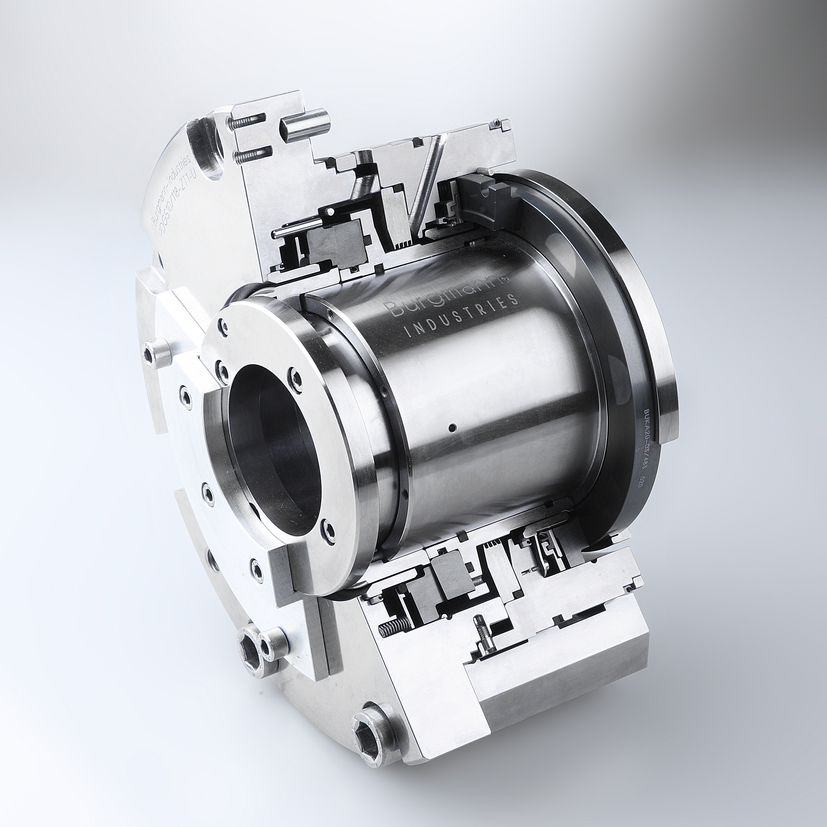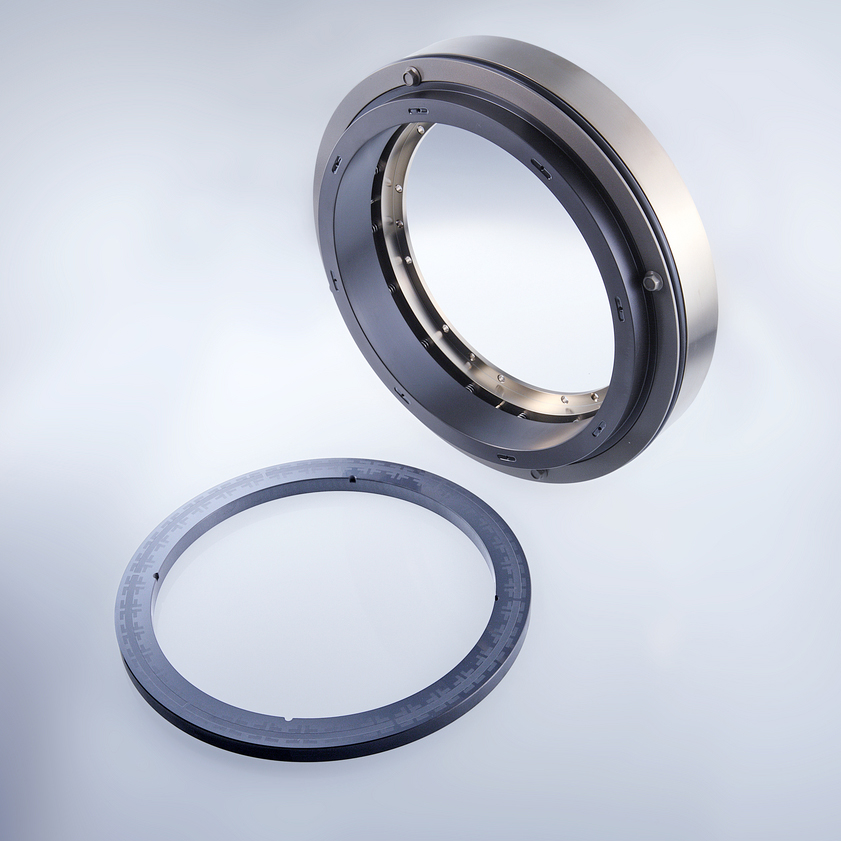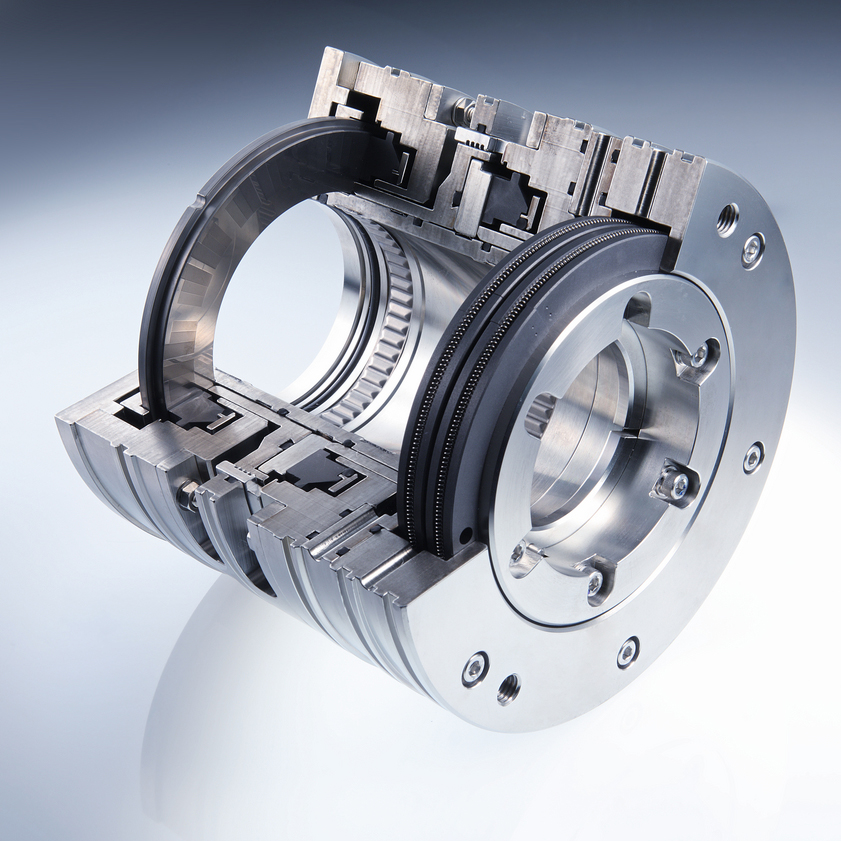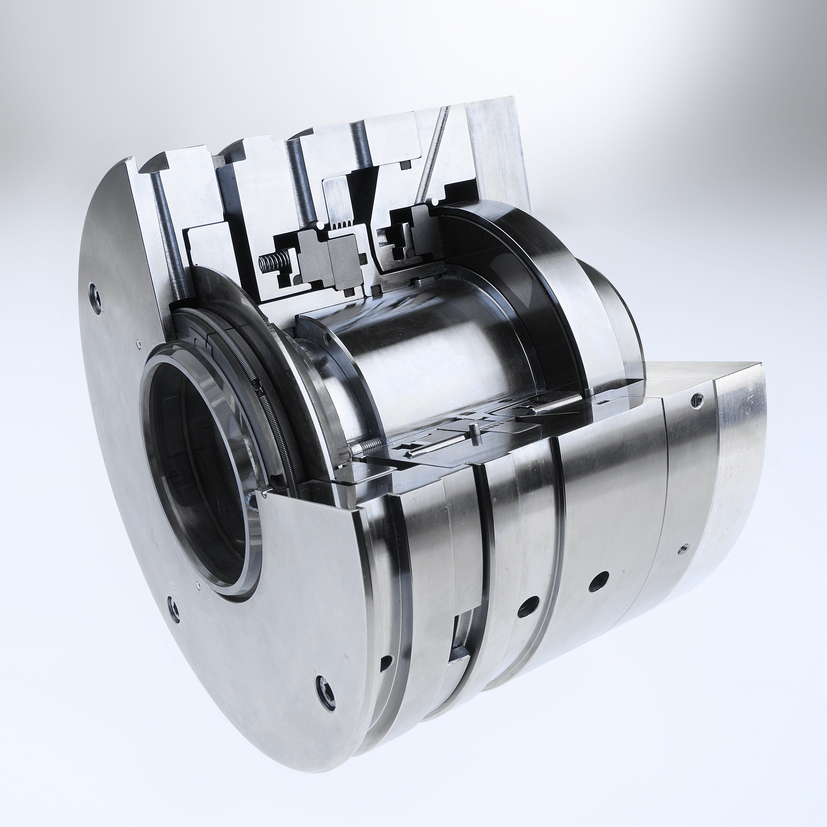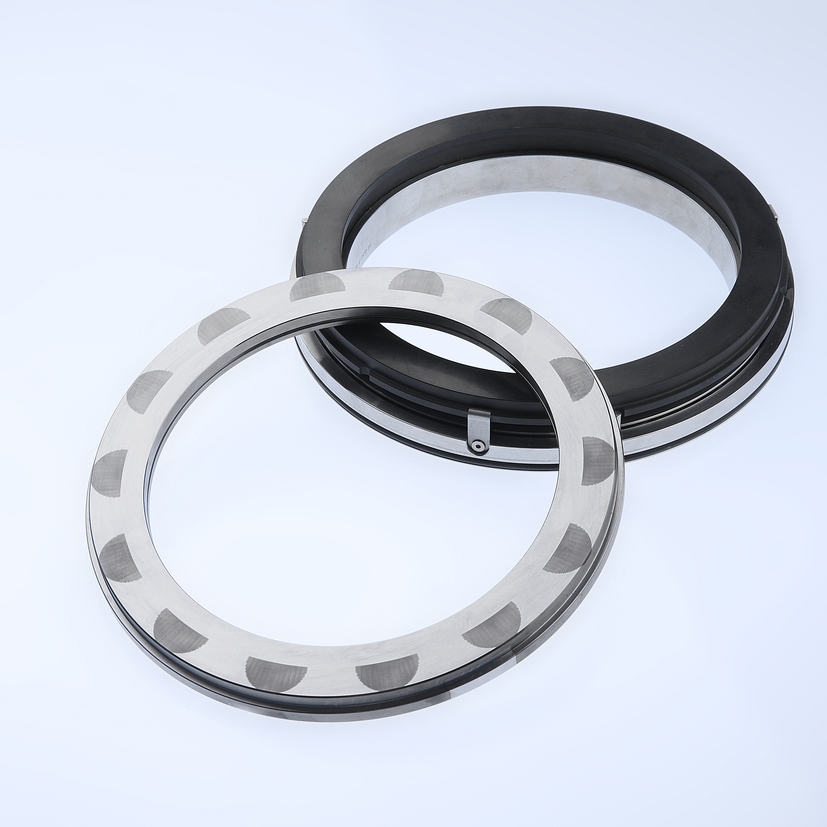PRODUCTS
PDGS
Gas-Lubricated Seal
Feature
- Gas-lubricated
- Uni-directional or bi-directional
- Elastomer-free
- Ready-to-fit cartridge unit
- Single, double, tandem seal and tandem with intermediate labyrinth available
Product specification example
Standards and approvals
NACE
Materials
Seal face: Silicon carbide (Q1) with DLC coating
Seat: Silicon carbide (Q1) with DLC coating
Available with EagleBurgmann DiamondFace coating.
Secondary seals: Polymer rings
Metal parts: 1.4006 or other stainless steels.
Operating range
Pressure: p = 0 … 450 bar (0 … 6,525 PSI)
Temperature: t = -170 °C … +230 °C (-274 °F … +446 °F)
Sliding velocity: vg = 0.6 … 200 m/s (2 … 656 ft/s)
Recommended applications
Oil and gas industry
Refining technology
Petrochemical industry
Hydrocarbon gas
Ammonia
Nitrogen
Refrigerants
Air
Centrifugal compressors
Turbo expanders
Blowers
Installation, Details, Options
Main components of the dynamic secondary seal of the PDGS are made of the extremely rigid material tungsten carbide which allows an optimum control of the extrusion clearance over the full range of peration. The specific design of the polymer cup seals ensures minimum sliding forces combined with wear-free operation.
Product variants
PDGS Single seal
Application: The simplest seal is a Dry Gas Seal in singl
arrangement. This seal is used in case that due to the
nature of the product gas no additional back up seal is
required. Separation seals as labyrinths, radial learance
seals or CobaSeal are optionally available. This version is used as an emission-free arrangement with a corresponding flare/vent connection. Primary leakage is then discharged with the separating gas to the primary vent (flare). In the case of dirty gases the gas to be sealed has to be filtered in addition and conveyed to the seal chamber via connection “A”. The resulting gas flow from the sealing compartment prevents any dirty/wet gas gas entering the seal.
PDGS Tandem seal
Application: Where small product leakages of process gas are admissible, e.g. on gas pipeline compressors. Seal on the atmosphere side acting as a safety seal. The tandem arrangement provides a particularly high degree of operational safety. The seal on the product side and the seal on the atmosphere side are able to absorb the complete pressure differential. Under normal operating conditions the full pressure is educed only by the seal on the product side. The space between the seal on the product side and the seal on the atmosphere side is cleared by a connection “B” to the flare. The pressure differential to be sealed by the seal on the atmosphere side equals the flare pressure, so the leakage to the atmosphere side or to the vent is very low. If the main seal fails, the second seal acts as a safety seal.
PDGS Tandem seal with intermediate labyrinth
Application: Where product leakages to the atmosphere as well as buffer gas leakages to the
product are inadmissible, e.g. on H2, ethylene or propylene compressors. With this version the
product pressure to be sealed is reduced via the seal on the product side. The entire process gas leakage is discharged via connection “B” to the flare. The seal on the atmosphere side is pressurized with buffer gas (nitrogen) via connection “C”. The pressure of the buffer gas ensures that a current flows via the labyrinth to the primary vent outlet.
PDGS Dual Seal
Application: Where product leakages to the atmosphere are inadmissible and tandem arrangements are not suitable because of too small product gas pressures. Buffer gas leakages into the product must be admissible (buffer pressure p3 > p1). This seal is used when a neutral buffer gas of suitable pressure is available. Typical applications are to be found mainly in the chemical industry, e.g. on HC gas compressors. A buffer gas, e.g. nitrogen, is fed between the seals via connection “C” at a higher pressure than the product pressure. One part of the buffer gas leakage escapes to the atmosphere side and the other part to the product.
Applicable ranges, performance data and figures can serve only as a guide for selection and therefore in actual use there will be some cases where general specifications cannot be applied due to unknown factors or constraints.
Please check the applicability before use.
The contents are subject to change without notice for improvement.
Download Documentation














